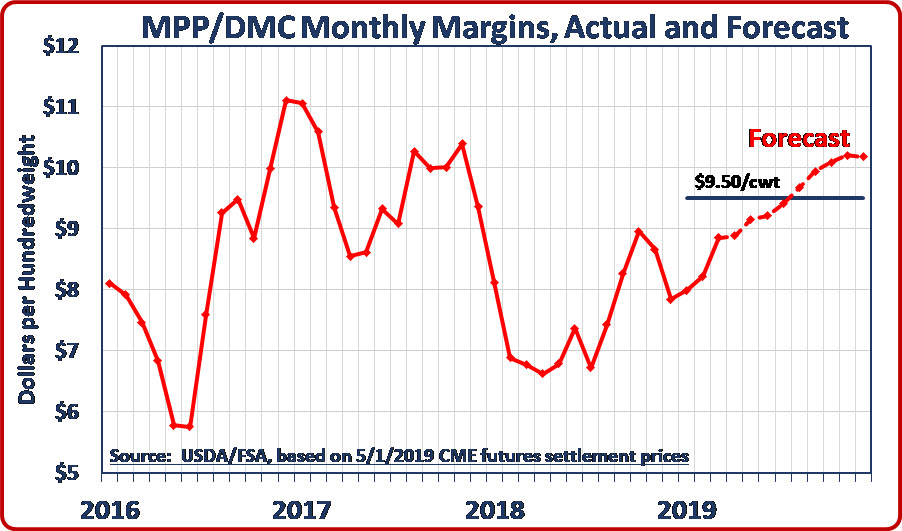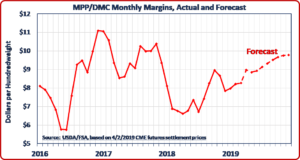ARLINGTON, Va. – The National Milk Producers Federation today welcomed California Dairies Inc. into its membership, as the addition of the largest dairy cooperative in the biggest dairy-producing state significantly bolsters the strength of dairy producers in speaking with a unified voice on national and international issues of concern to farmers.
“We are very pleased to have CDI’s voice among our already strong and active membership,” said Jim Mulhern, president and CEO of NMPF, which is the largest U.S. dairy-farmer organization. “CDI bolsters the nationwide reach and diversity of our organization and strengthens our ability as farmer-owned cooperatives to tackle a wide array of challenges in marketing, farm labor and trade, food safety, nutrition and product labeling.”
CDI, based in Visalia, produces 40 percent of California’s milk and about 8 percent of all milk in the U.S. By volume, it is the second-largest dairy cooperative in the United States. Co-owned by more than 370 dairy producers who ship 16 billion pounds of milk annually, CDI makes high-quality butter, fluid milk products and milk powders. It produces two leading brands of butter – Challenge and Danish Creamery — and its products are available in all 50 states and more than 50 foreign countries.
“California Dairies, Inc. is excited to begin our membership with the National Milk Producers Federation as we work toward a stronger U.S. dairy industry,” said Simon Vander Woude, Chairman of the CDI Board of Directors. “Both CDI and NMPF are active and respected organizations in Washington, DC, advocating on behalf of our respective memberships. However, we believe by combining our efforts, we can be an even stronger and more effective coalition, advocating pro-dairy policies that fundamentally strengthen our farmers and our industry as a whole.”
CDI officially joined National Milk today by a unanimous vote of its board of directors at NMPF’s June meeting. The cooperative will have five seats on that board of 53 members. In addition to approving CDI’s membership, NMPF also created a 14-member executive committee, which will include one member from CDI, to serve as a core leadership body, supplementing the work of its officers and board. The members of the executive committee include:
Jay Bryant, Maryland & Virginia Milk Producers Cooperative Operation (Reston, VA)
Beth Ford, Land O’Lakes Inc. (Arden Hills, MN)
Tony Graves, Prairie Farms Dairy, Inc. (Edwardsville, IL)
Mike McCloskey, Select Milk Producers Inc. (Dallas, TX)
Randy Mooney, Dairy Farmers of America (Kansas City, KS)
Keith Murfield, United Dairymen of Arizona (Tempe, AZ)
Ken Nobis, MMPA (Novi, MI)
Doug Nuttelman, DFA
Leroy Plagerman, Northwest Dairy Association/Darigold (Seattle, WA)
Neal Rea, Agri-Mark, Inc. (Andover, MA)
David Scheevel, Foremost Farms USA (Baraboo, WI)
Steve Schlangen, Associated Milk Producers Inc. (New Ulm, MN)
Simon Vander Woude, CDI
John Wilson, DFA
“The addition of the new executive committee will be helpful in gaining additional member input on often fast-developing policy issues, and it reflects the strong interest of our membership in united dairy community action,” said Randy Mooney, NMPF’s chairman and dairy farmer from Rogersville, MO.
###
The National Milk Producers Federation (NMPF), based in Arlington, VA, develops and carries out policies that advance dairy producers and the cooperatives they own. NMPF’s member cooperatives produce the majority of U.S. milk, making NMPF the voice of dairy producers on Capitol Hill and with government agencies. For more, visit www.nmpf.org.




 g in MPP during 2018 due to this restriction to enroll retroactively in MPP and collect payments for 2018 for the months during which they were prevented from doing so. Farmers who purchased buy-up coverage under MPP during 2014-2017 are also eligible under the Farm Bill to receive a partial refund of their net payments during those years.
g in MPP during 2018 due to this restriction to enroll retroactively in MPP and collect payments for 2018 for the months during which they were prevented from doing so. Farmers who purchased buy-up coverage under MPP during 2014-2017 are also eligible under the Farm Bill to receive a partial refund of their net payments during those years.



